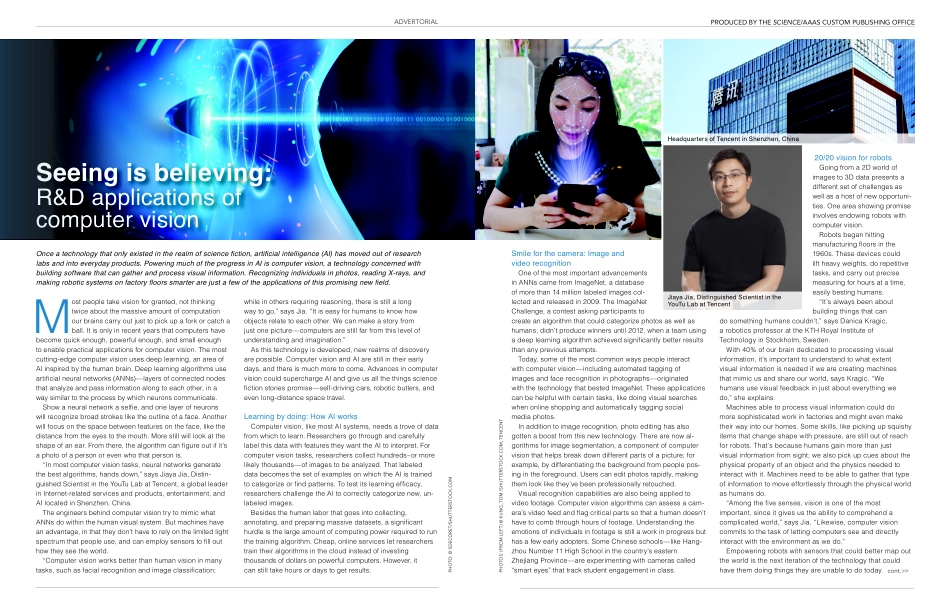20/20 vision for robotsGoing from a 2D world of images to 3D data presents a different set of challenges as well as a host of new opportuni-ties. One area showing promise involves endowing robots with computer vision. Robots began hitting manufacturing floors in the 1960s. These devices could lift heavy weights, do repetitive tasks, and carry out precise measuring for hours at a time, easily besting humans.“It’s always been about building things that can do something humans couldn’t,” says Danica Kragic, a robotics professor at the KTH Royal Institute of Technology in Stockholm, Sweden.With 40% of our brain dedicated to processing visual information, it’s important to understand to what extent visual information is needed if we are creating machines that mimic us and share our world, says Kragic. “We humans use visual feedback in just about everything we do,” she explains. Machines able to process visual information could do more sophisticated work in factories and might even make their way into our homes. Some skills, like picking up squishy items that change shape with pressure, are still out of reach for robots. That’s because humans gain more than just visual information from sight; we also pick up cues about the physical property of an object and the physics needed to interact with it. Machines need to be able to gather that type of information to move effortlessly through the physical world as humans do. “Among the five senses, vision is one of the most important, since it gives us the ability to comprehend a complicated world,” says Jia. “Likewise, computer vision commits to the task of letting computers see and directly interact with the environment as we do.”Empowering robots with sensors that could better map out the world is the next iteration of the technology that could have them doing things they are unable to do today.ADVERTORIALPRODUCED BY THE SCIENCE/AAAS CUSTOM PUBLISHING OFFICEPHOTO: © SDECORET/SHUTTERSTOCK.COMPHOTOS: (FROM LEFT) © KUNG_TOM /SHUTTERSTOCK.COM; TENCENTcont.>>Once a technology that only existed in the realm of science fiction, artificial intelligence (AI) has moved out of research labs and into everyday products. Powering much of the progress in AI is computer vision, a technology concerned with building software that can gather and process visual information. Recognizing individuals in photos, reading X-rays, and making robotic systems on factory floors smarter are just a few of the applications of this promising new field.Most people take vision for granted, not thinking twice about the massive amount of computation our brains carry out just to pick up a fork or catch a ball. It is only in recent years that computers have become quick enough, powerful enough, and small enough to enable practical applications for computer vision. The most cutting-edge computer vision uses deep l...


